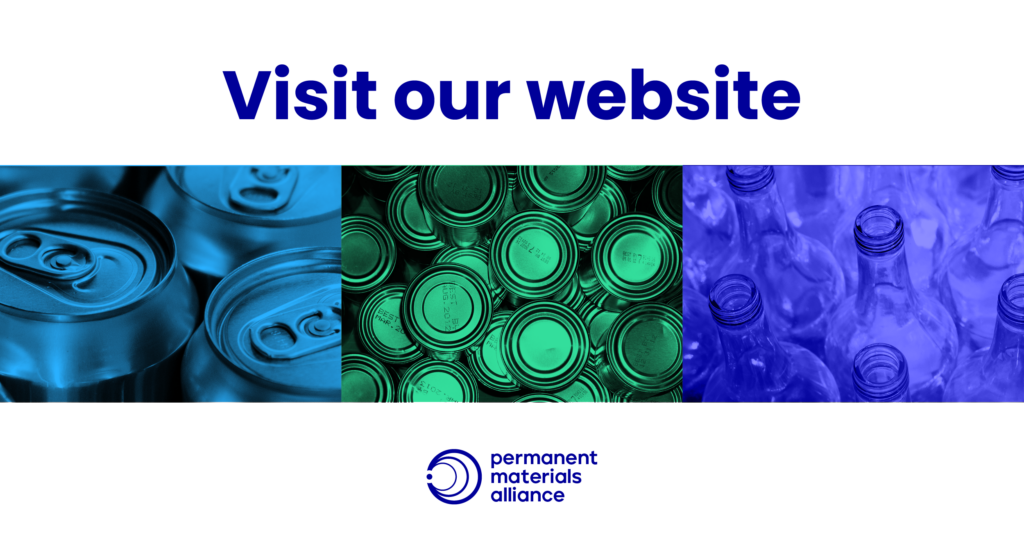Packaging and Packaging Waste Regulation trilogue discussions have concluded, the latest text has been approved by the European Parliament’s Environment (ENVI) Committee, and the formal adoption process will continue with the European Parliament’s plenary vote on 24th April.
Much will be discussed when defining supporting secondary legislation, so it is still possible to push for greater ambition in line with the objective of the Circular Economy Action Plan to make all packaging on the EU market be reusable or recyclable in an economically viable way by 2030.
Together with the Permanent Materials Alliance, we continue to support all provisions promoting high quality recycling and championing greater circularity in Europe.
There is still scope to strengthen design for recycling criteria as well as definitions and targets for recyclability that will encourage the use of materials genuinely suited for multiple recycling while guarding against the substitution of less recyclable alternatives. 
We welcome that the ENVI vote has backed the so-called packaging recyclability performance grades, a similar approach to existing energy consumption labels, where formats that do not meet the recyclability criteria will ultimately be phased out.
Criteria definition will be key. We continue to call for an ambitious grading system, with strict quantitative criteria to ensure packaging materials are not only designed for recycling but also effectively collected, sorted and recycled at scale, for which an ambitious quantitative definition is also vital.
Despite the new EU harmonised calculation methodology focused on the amount of material actually recycled at the entrance of recycling operations, several packaging formats continue to focus on collection rates rather than real recycling rate. Moreover, the inclusion of unintended materials, non-natural humidity, or food residues within the packaging undermines the accuracy of declared recycled tonnages. It’s imperative that calculation rules are not only clearly outlined but also rigorously adhered to, verified, and enforced.
We also continue to support the application of net cost approach meaning that packaging types bear the costs of their own collection, sorting and recycling infrastructure, which should be directly related to their recyclability. This implies no cross-substitution of the costs of a material being partly covered by another material.
Effective collection, sorting and recycling is the only way forward for a truly efficient circular economy in the EU. We continue to urge all EU Institutions to retain high levels of ambition in the upcoming discussions.

